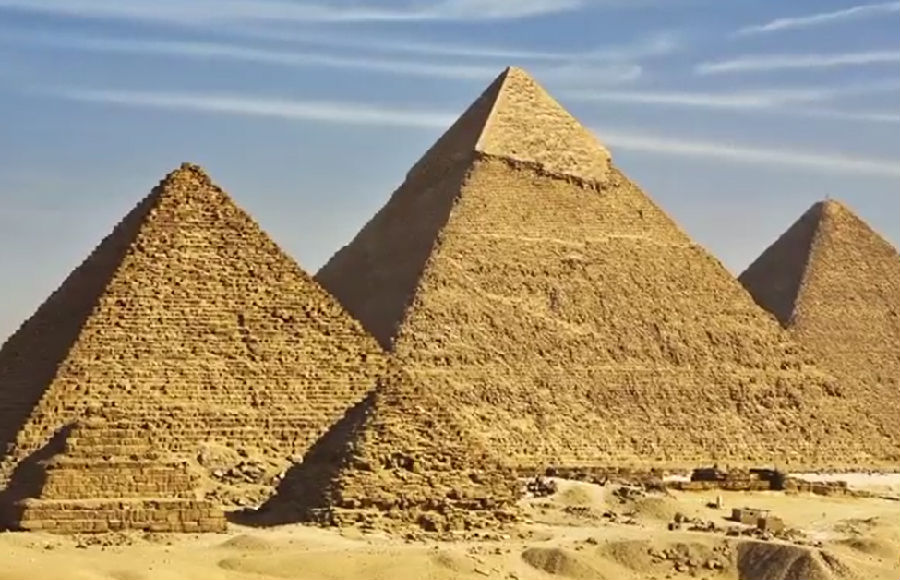We talk a lot around here about different kinds of living things,
我们在这儿讨论过很多不同种类的生物,
ones that are alive today, and ones that lived in the past.
有些可能现在仍活着,有些是以往的生物。
But do you know one living thing that scientists are always interested in learning more about?
但你知道科学家们一直感兴趣的生物是什么吗?
People! People have been around for hundreds of thousands of years,
人!人类存在几十万年了,
and human life has changed a lot in that time.
在此期间人类的生活改变了许多。
How do we know?
那么我们是如何知道的?
Well, a lot of what we know about how people lived in the past comes from what they've left behind.
我们了解的人们过去的生活方式许多源于他们留下的东西。
These things that were made or used by people in the past are called artifacts.
人们过去制造或使用的这些东西叫做文物。
Artifacts can be really old, like the stone tools that early humans used,
文物可能很古老,比如人类早期使用的石器,
or they can be not very old at all, like some cans that people tossed away just 50 years ago.
或者时间不长,比如人们50年前扔的罐子。
No matter how old they are, there are scientists whose job it is to find and study these artifacts!
不管它们多古老,有些科学家的工作就是寻找并研究这些文物的!
They're called archaeologists, and they help us learn more about human history.
他们叫考古学家,能帮助我们了解更多的人类历史。
So, how do they do what they do? Well, mostly, they dig!
那么,他们如何工作?他们大部分的工作是挖掘!
Archaeologists are different from paleontologists, who also do a lot of digging!
考古学家与同样做许多挖掘工作的古生物学家不同!
Paleontologists study natural history and dig up fossils.
古生物学家研究的是自然历史,挖掘化石。
But archaeologists study human history and dig up artifacts.
但考古学家研究的是人类历史,挖掘文物。
Archeologists spend a lot of time digging where they think they might find important historical objects, or artifacts.
考古学家花很多时间挖掘他们认为可能找到重要文物的地方。
But how do they know where to dig?
但他们怎么知道在哪儿挖?
If they have an idea of where they might find artifacts,
如果他们有在哪儿可以找到文物的想法,
they'll visit the spot and perform something called a survey.
就会去那个地方实施调查。

A survey is when archaeologists look for clues on the ground, like old or broken pieces of artifacts,
调查是指考古学家在地上寻找线索,比如破旧的文物碎片,
that suggest more cool artifacts might be underground waiting to be discovered.
这表明地下可能有更多有趣的文物等着被发现。
The archaeologists mark these spots with little flags.
考古学家会用小旗标记这些地点。
These are spots where they'll excavate or dig, looking for clues.
他们将开凿挖掘它们,寻找线索。
But sometimes, archaeologists need to see the bigger picture when they're learning about a place.
但有时,考古学家在了解一个地方时需要更大的图景。
So, they also survey places by looking at them from the sky!
所以,他们也需要通过从天上俯瞰的方式做调查。
Hundreds of miles up in space,
考古学家从天上几百公里远的位置
satellites are used by archaeologists to take pictures of places that might have buried buildings,
利用卫星拍照可能掩埋建筑的地方,
or the ruins of other structures that you can't see from the ground.
或你在地上看不到的其他建筑遗迹。
Closer to earth, some archaeologists use remote controlled flying machines with cameras on them.
有些考古学家在靠近地球时使用遥控飞行器,上面有照相机。
By flying up just a few meters or so,
这些机器只需要飞几米高,
these machines can give scientists a bird's eye view of where there used to be something like a house, or maybe a whole village!
就能为科学家提供遗迹的鸟瞰图,这些地方过去可能是房子或是整个村庄!
Once archaeologists have found a place they'd like to explore, it's time to get digging!
一旦考古学家找到了他们想要探索的地方,就该开始挖掘了!
But archaeologists don't just dig in these spots however they want.
但他们不是随意挖的。
They carefully map out the whole area they want to explore,
他们会仔细绘制出整个探索区域,
so they don't damage artifacts in the ground,
这样就不会破坏地里的文物了,
and so they know exactly where they found them.
也能准确知道文物在哪儿。
And they do that by using grids.
他们利用网格绘制。
A grid is a design that breaks a section of the ground into small squares.
网格是一种将地面分成小方块的设计。
These squares are usually marked with rope and string.
这些方块通常用绳子和线标记。
Grids help archaeologists keep track of the different artifacts that they uncover.
网格帮助考古学家记录他们发现的不同文物。
Each object they find is labeled with a grid number, and then its location is mapped,
每件文物都用网格数标记,然后绘制出位置,
so archaeologists can remember exactly where each artifact came from.
这样考古学家就能准确记忆每件文物的出处了。
And when they're digging, archaeologists use all sorts of different tools,
考古学家挖掘时会使用各种不同的工具,
from spoons and brushes to shovels, and even digging machines like bulldozers.
从勺子、刷子到铲子,甚至是推土机这样的挖掘机器。
So, once an archaeologist is done surveying and digging for the day. What's next?
那么,考古学家一旦完成调查和挖掘工作,接下来会做什么呢?
It's time to go to the lab!
该去实验室了!
The lab is where archaeologists get a close-up look at the things they've uncovered.
实验室是考古学家近距离观察发现物的地方。
There they start to make guesses about who might have made the artifacts,
他们开始猜测制造这些文物的人,
what they were used for, and when in history they might be from.
它们的用途以及它们出现的历史时间。
These are the steps that archaeologists use to study how people lived all over the world.
这些都是考古学家用于研究全世界的人们如何生活的步骤。
Some archaeologists, for example, study ancient Egypt, discovering tombs where people were buried,
比如,有些考古学家研究古埃及,发现了人们埋葬的坟墓,
and learning about how the pyramids and other buildings were built thousands of years ago.
了解到几千年前的金字塔和其他建筑是怎么建成的。
Other archaeologists want to learn more about the people who built amazing, old structures
有些考古学家想要更多地了解是谁建造了那些令人惊叹的古老建筑,
in places from England to the American Southwest.
他们对英格兰到美国西南部的建筑感兴趣。
But lots of archaeologists study ordinary, everyday people in the past, to see what their lives were like,
但许多考古学家研究过去的普通人,
whether it was a family of farmers in Europe a thousand years ago,
不管是一千年前欧洲的农民家庭,
or workers who built railroads in the United States just a hundred-fifty years ago.
还是50年前在美国修建铁路的工人,想看看他们的生活是怎样的。
In a way, archaeologists are sort of like detectives,
在某种程度上,考古学家有点儿像侦探,
digging into the Earth to see what questions they can answer about our history.
挖掘地球,了解历史答案。
Which is pretty awesome, if you ask me.
如果你问我怎么想,我会说他们的工作很棒。
Thanks for learning about archaeologists with us!
感谢您与我们一起了解考古学家!
And remember, if you have a question about anything you'd like to learn more about,
记住,如果你有任何想要了解的问题,
just let us know by getting help from a parent,
寻求父母的帮助让我们知道,
and leaving a comment below or emailing us to kids@thescishow.com.
你们可以在下方留言或发邮件至kids@thescishow.com。
And we'll see you next time!
我们下期见!











